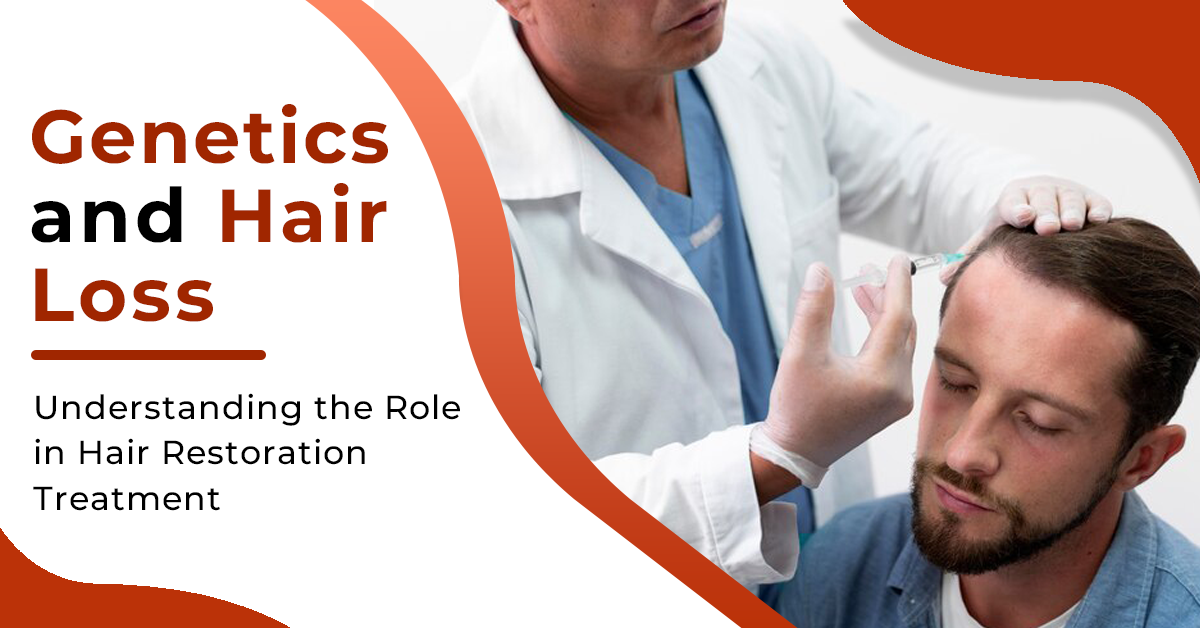
When it comes to the intricate tapestry of our genetics, there’s a lot more at play than just eye color or the shape of our noses. Our genes hold the key to various aspects of our health, and one area where they can significantly influence us is in the realm of hair loss. In this exploration, we aim to shed light on the connection between genetics and hair loss, delving into how understanding this relationship is crucial for effective hair restoration treatments.
The Genetic Landscape of Hair Loss
As we embark on this journey of understanding the genetic underpinnings of hair loss, it’s essential to grasp the basics. Hair loss, scientifically known as alopecia, is a complex phenomenon influenced by both genetic and environmental factors. While external elements like stress, diet, and lifestyle choices play a role, our genetic code often acts as the silent orchestrator behind the scenes.
Many of us have heard about the infamous “baldness gene,” scientifically termed androgenetic alopecia (AGA). This genetic predisposition to hair loss is inherited from our parents and can affect both men and women. While it may not be the sole factor, it sets the stage for the hair follicles to be more sensitive to hormonal changes, particularly the hormone dihydrotestosterone (DHT).
Understanding DHT's Role
DHT, a byproduct of testosterone, takes center stage in the hair loss drama. For individuals with a genetic predisposition to AGA, the hair follicles on the scalp become more susceptible to the adverse effects of DHT. Over time, these sensitive follicles shrink and produce thinner, shorter strands of hair until they eventually cease to produce hair altogether. This gradual miniaturization process is the hallmark of genetic hair loss.
The Journey to Hair Restoration
Armed with the knowledge of our genetic predisposition to hair loss, the path to hair restoration becomes clearer. The field of hair restoration treatments has evolved significantly, offering hope to those looking to reclaim their crowning glory.
One of the most promising avenues is the use of medications that target DHT. Finasteride, for example, is a medication that inhibits the conversion of testosterone into DHT, thereby slowing down the miniaturization process of hair follicles. However, it’s crucial to consult with a healthcare professional before embarking on any medication regimen.
Beyond medications, advancements in surgical interventions, such as hair transplant procedures, have revolutionized the landscape of hair restoration. These procedures involve the transplantation of hair follicles from donor areas to the affected regions, offering a more permanent solution to genetic hair loss.
Conclusion
In the intricate dance of genetics and hair loss, understanding the genetic roots of our follicular fate is pivotal. By acknowledging the role of our genes and the influence of DHT, we can navigate the landscape of hair restoration treatments more effectively.
Remember, the journey to reclaiming your luscious locks begins with knowledge. Consult with healthcare professionals, explore the available treatments, and embark on a path that aligns with your unique genetic makeup. Together, we can unravel the mysteries of our genes and pave the way to a future with fuller, healthier hair. Ready to reclaim your hair? Contact us today for personalized insights into genetic hair loss and effective restoration treatments.

No Comments